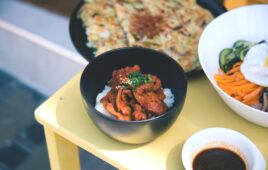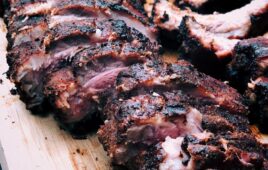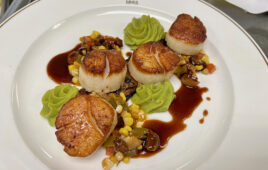These three club chefs are offering deliciously prepared wagyu that will never disappoint the discerning beef connoisseurs within their membership bases.
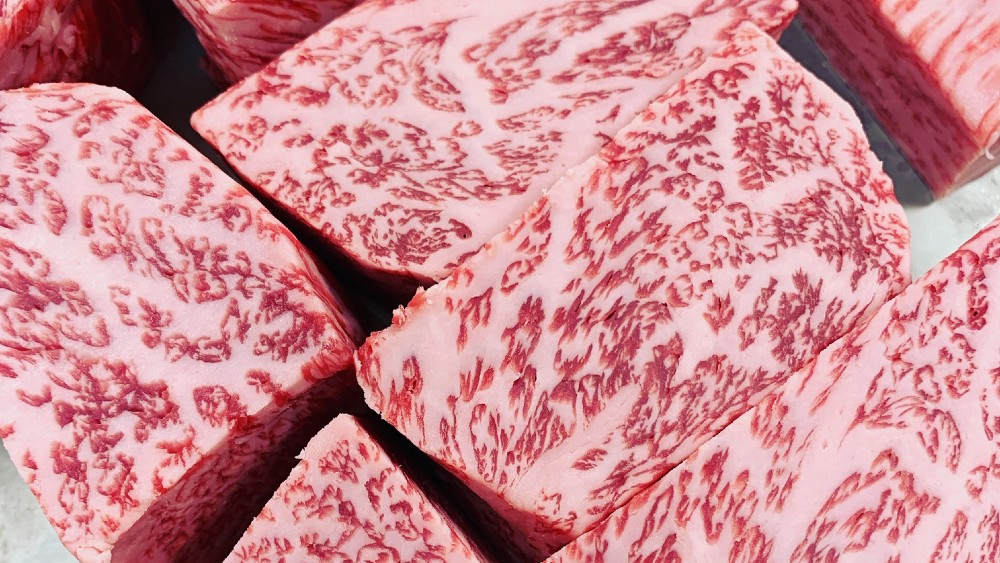
Wagyu beef is a real luxury. It is deliciously marbled, and tender yet flavorful. And because clubs can tolerate a higher food cost, club chefs are uniquely positioned to feature Japanese, Australian and American wagyu on their menus in fine dining and beyond.
At Forest Lake Club in Columbia, S.C., Executive Chef Robert Meitzer has featured a number of different types and cuts of wagyu over the years, including what he calls the most expensive Caesar salad he’s ever made, which was topped with a 10-oz. A-5 ribeye.
“The flank has become one of my favorite cuts because of the texture and flavor,” says Meitzer. “We do a light marinade of fresh rosemary, crushed garlic and a touch of soy, Worcestershire and olive oil. We marinate it for five hours, grill it at medium-high heat to mid-rare, then let it sit for six minutes before slicing and serving.”
Mid-rare is ideal, Meltzer adds, because the center of the flank gets warm enough to melt the fat and achieve that coveted buttery flavor.
“In Japan, Kobe is traditionally served off a hot rock in very thin slices with a touch of salt,” he notes, adding that he once used that service style to showcase Kobe during a member dinner at his previous club.
Forest Lake CC also offers a wagyu brisket that requires a much different approach than the flank. Meitzer’s most recent brisket was covered in a coffee-and-ancho chile rub, then smoked for two hours, and was finally finished in the oven for six hours at 225° F.
“The result was a delicate, juicy brisket that was kind of like a Texas brisket with a richer flavor,” says Meitzer.
On occasion, Meitzer will feature 8-oz. waygu on Forest Lake’s a la carte fine-dining menu. Each time he does, he is careful to pair sides that balance the richness of the beef.
“I tend to feature a composed salad, a simple roasted potato or an Asian-influenced rice,” he says.
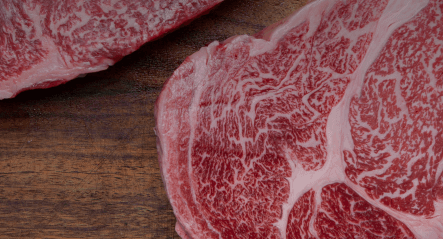
The Champagne of Beef
For meat-loving members, Kobe and wagyu beef are considered the epitome of fine dining. But what is the difference between kobe and wagyu, where do they come from, and what makes Japanese Kobe different from Australian Wagyu or American Wagyu?
Japanese: Kobe beef comes from the Tajima-gyu breed of cattle found in Japan’s Hyōgo Prefecture, of which Kobe is the capital and the meat’s namesake. In the 2nd century, the breed grew isolated from other breeds in Japan’s mountainous landscape. That isolation, paired with distinctive feeding techniques, are said to have led to the unique differences in taste and texture.
Kobe beef—known as A4 or A5 Wagyu—is renowned for its flavor, tenderness and high amount of intramuscular fat, which gives the meat a marbled appearance.
The word “wagyu” means Japanese cow and is a holistic term that refers to any meat from Japanese cattle. Wagyu cattle are classified into four breeds: Japanese Black, Japanese Brown, Japanese Poll, and Japanese Shorthorn. Tajima-gyu cows belong to the Japanese Black breed and are the only breed that fulfill strict lineage and quality criteria to be termed ‘Kobe beef.’
This means that all Kobe beef is wagyu beef, but only a very small percentage of wagyu beef is Kobe beef.
Australian: Australian-raised Wagyu beef is a crossbreed of Japanese Wagyu cattle with Australian Holstein cattle. The meat has a large amount of intramuscular fat, though not to the same extent as Japanese Wagyu’s marbling. Australian-raised Wagyu beef has an earthy-caramel sweetness and a silky texture rich in good fats, Omega-3s and oleic acid.
American: American-raised Wagyu beef is the result of crossbreeding Japanese Wagyu cattle with Angus cattle. The resulting meat features a blend of the famous Wagyu buttery marbling and a robust beefy flavor.
*Photo courtesy of W.Black
Worth the Price
At the Bourbon Steak restaurant inside Florida’s JW Marriott Miami Turnberry Resort & Spa, Gordon Maybury, Director of Culinary, features Japanese A5 Wagyu beef, American Wagyu and Prime cuts on his menu.
For perspective, the 8-oz. Japanese A5 striploin is $195. The 8-oz. American Wagyu Ribeye Filet is $95. And the 8-oz. Prime Angus Beef filet mignon is $52.
“Wagyu is an expensive commodity in a lot of cases,” says Maybury, who has been with the resort for more than five years. “It has a high level of fat and therefore a lot of umami.”
Preparation of the wagyu cuts at Turnberry are intentionally simple. Steaks are cooked on a wood-burning grill to medium rare at most.
“We like to get that black-and-blue char on the outside with an almost paté-like texture on the inside,” says Maybury, noting that Turnberry’s restaurant chef or sous chef oversees the butchery, trimming, grilling and finishing of each steak. “For the Japanese wagyu, we bring in a whole striploin, so we can use any trimmings in a tartare or as an amuse.”
Todd Kelly, Director of Food & Beverage and Executive Chef of Cherokee Town & Country Club, Atlanta, Ga., uses his regular e-blasts to members to educate them about prized ingredients like wagyu. As a result of this member education, he says, when the club hosted a wagyu beef-themed wine dinner, it sold out almost immediately.
As a result of the wine dinner’s success, Kelly and his crew added wagyu to the menu in three different ways, including:
- Wagyu Burger Stuffed with Red Wine Braised Wagyu Short Ribs served with Comte Cheese, Roasted Tomatoes, Truffle Aioli and Frisse-Shaved Truffle Salad
- Wagyu Tenderloin Carpaccio with Pickled Chanterelle Mushrooms and Shallots, Beef Tongue, Buttermilk Gel and Curry Oil
- Sous Vide American Wagyu Strip Loin with Butter Poached Porcini Mushrooms, Roasted Garlic-Parmesan Polenta Romanesco and Bourbon Barrel-Aged Soy
“I like offering our members the caliber of wagyu in both fine and casual dining,” says Kelly. “The burger is inspired by the Juicy Lucy and belongs in a casual environment. The flavor is out of this world, and we expect to sell hundreds of them.
“Then, in fine dining, we’ll offer two simple courses,” he continues. “One will be a take on a carpaccio with pickled summer vegetables, and the other will be an entrée that includes a seared piece of A5 with some super-simple sides that let the beef shine.”


